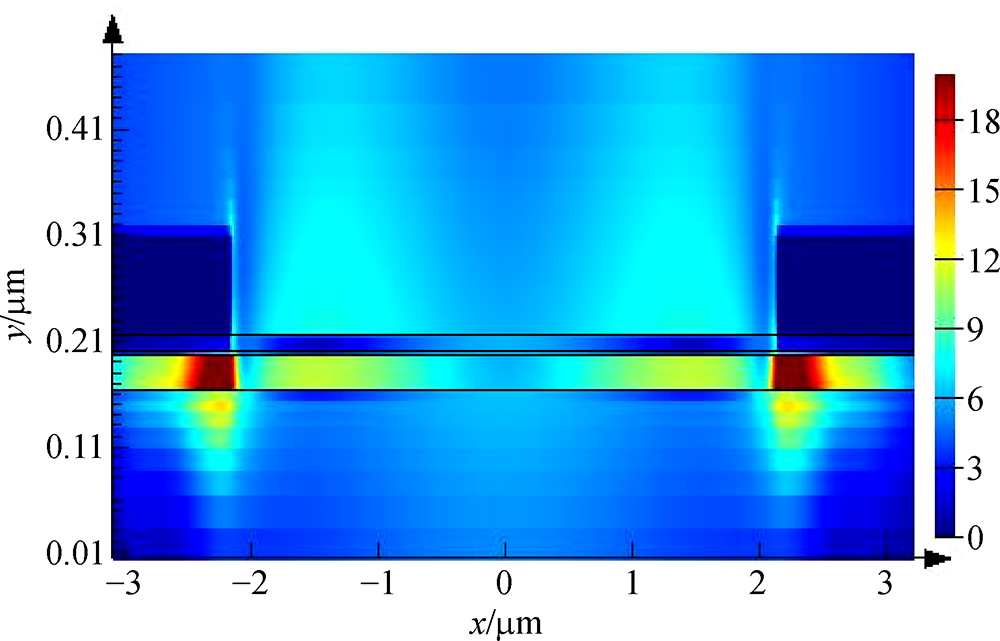Then, we explore the influence on graphene absorption with different AlN thickness. The metal grating is chose as
p = 10
mm,
dAu = 100 nm, and
w = 5.72
mm. The thickness of AlN changes to
dAlN = 100, 80, 60, 40, 20 nm, while the other parameters keep unchanged. As shown in Fig. 5, the absorbance of system reaches close to 100% at
l = 10.57
mm. In Fig. 6, the peak absorbance of graphene for the different AlN thickness are 28.3%, 30.8%, 34.0%, 37.5%, and 43.6%, respectively. As the thickness of AlN decreases, the absorbance of graphene increases. It is due to that as the thickness of AlN increases, the path of IPhP in AlN increases, which means more energy loss, and the energy that eventually couples into the graphene decreases. While the AlN becomes thinner, the propagation path of IPhP getting shorter, and the energy consumed by the AlN decreases; in consequence, the energy coupled into the graphene increases, resulting in an increase of the graphene absorption. In addition, we found that as the thickness of AlN decreases, the absorption peak shifts toward the long wavelength direction. This is due to that for multilayer dielectric film, the characteristic frequency of IPhP is not only related to the materials, but also to the thickness of each dielectric layer [
25]. As the thickness of AlN decreases, it has an impact on the characteristic frequency of the interface phonon, which causes the resonance absorption peak red-shifted.









